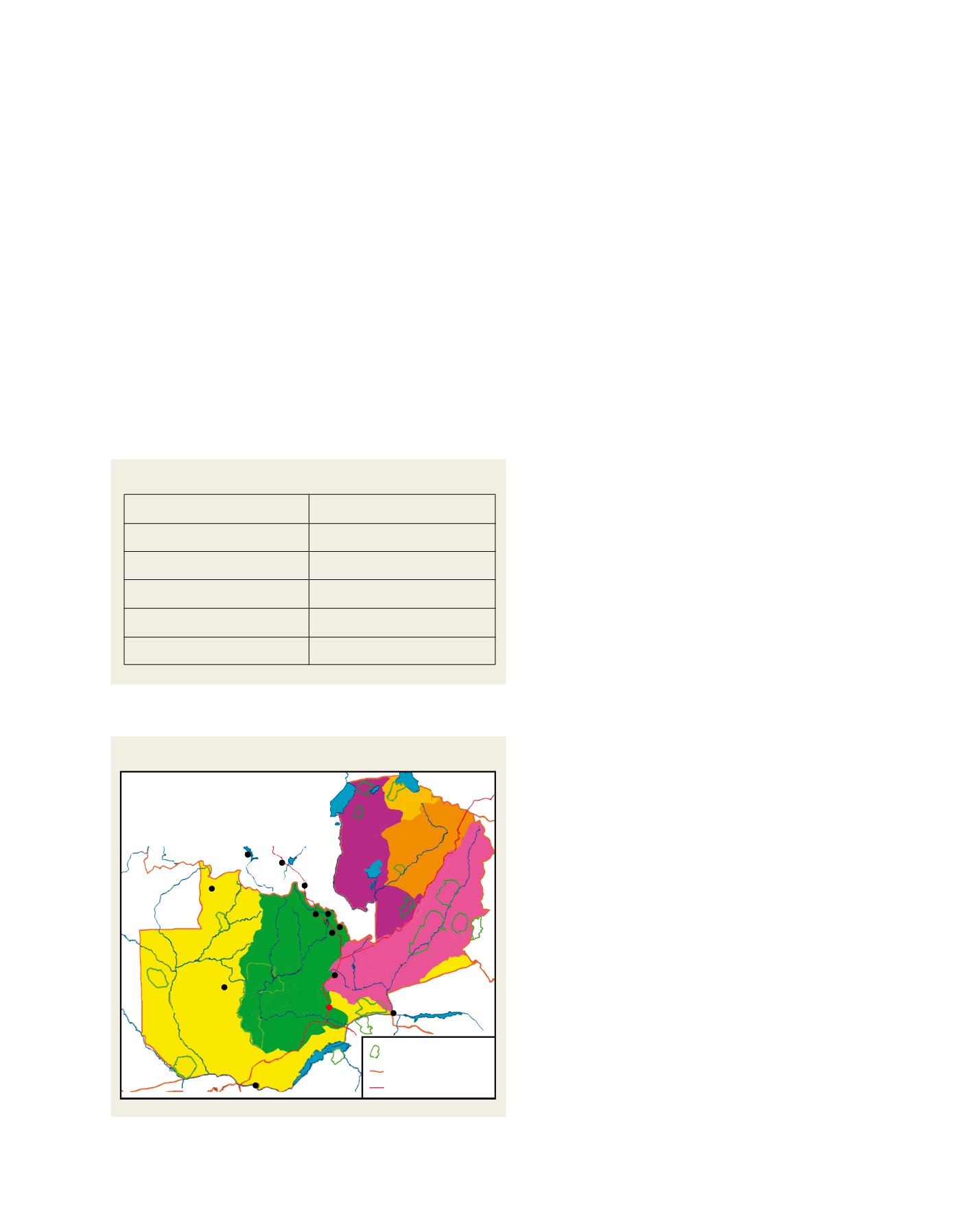

[
] 93
T
ransboundary
W
ater
M
anagement
Convention on the Law of Non-Navigational Uses of
International Watercourses, the Ramsar Convention,
the United Nations Framework Convention on
Climate Change and the United Nations Convention
on Biological Diversity. Furthermore, it is also a
signatory to two international agreements on the
shared management of Lake Tanganyika and the
Kariba Dam on the Zambezi river. Lack of provi-
sion for the management of international waters in
the 1949 Water Act created a dilemma for Zambia
over whether to sign the Zambezi Watercourse
Management Commission (ZamCom) agreement in
2004. As such, Zambia needed to consult its stake-
holders before signing the agreement. However, as
part of the efforts to facilitate benefit sharing in the
Zambezi River Basin, Zambia embarked on water
sector reforms. Technical cooperation in the Zambezi
River Basin also exists among the large hydropower
dam operators and government institutions through
the Joint Operations Technical Committee involving
Zambia, Zimbabwe and Mozambique. Furthermore,
frequent droughts and floods have brought in another
dimension of technical cooperation on hydrological
data exchange between Zambia and Mozambique.
Two key government ministries are directly
involved in Zambia’s water sector reforms. One is the
Ministry of Mines, Energy and Water Development
which is currently responsible for water, under which
the Department of Water Affairs (DWA) has been
performing water resources management functions.
The other is the Ministry of Local Government and
Housing (MLGH), under which the Department of
Housing and Infrastructure Development (DHID) is
responsible for water supply and sanitation functions.
In the early 1970s, the Government of the Republic
of Zambia (GRZ) initiated a dialogue on water sector
reforms. Three key reports were prepared:
• the DWA report on the proposed Zambia National
Water Authority (July 1979)
• the report by Zambia Industrial and Mining
Corporation on the establishment of the proposed
National Water Authority (1985)
• the report by the Ministry of Decentralization
on the Reorganization Study of the Water and
Sanitation Sector in Zambia (1988).
However, it was not until 1994 that GRZ officially
embarked on the implementation of the water sector
reforms with regard to policy formulation, re-examin-
ing the legal and institutional framework and bringing
it in line with modern principles of water governance
and other pieces of legislation.
The first National Water Policy was adopted in 1994,
primarily to guide the restructuring of the water sector
with a focus on the water supply and sanitation subsec-
tor. Hence, water supply and sanitation functions were
transferred from the ministry responsible for water to the
MLGH. This was followed by major achievements in the
development of the legal and institutional framework,
framework, secondary data, reports, publications, key informant
interviews and presentations shared at the Sub-Saharan Africa Water
Sector Reform Consultative Meeting organized by the Republic
of Zambia in Lusaka in June 2013. A further examination of the
water sector reform process in Zambia, with respect to the existing
regional and international water resources management instru-
ments, will enable an evaluation of how these have influenced and
shaped the water sector reforms.
Until October 2012, the Water Act Cap 198 of 1949 was the
principal act for the allocation of surface water resources through
the system of water rights. The major constraints of this law were
that it did not elaborate on sustainable water resource manage-
ment practices and never provided for groundwater regulation
and international water resource management. However, at the
regional and international levels, Zambia has been a signatory to a
number of international treaties related to the water sector. These
include the Southern African Development Community (SADC)
revised protocol on shared watercourses, the United Nations
Major river system in Zambia
Zambezi
Kafue
Luangwa
Chambeshi-Luapula
Tanganyika
Population distribution (%)
23.72
39.98
18.3
16.88
1.13
Population of Zambia’s major river systems
Source: Modified after JICA Report, 1995
The six catchments in Zambia
DEMOCRATIC REPUBLIC
OF CONGO
ANGOLA
Kwando
ZAMBEZI
Zambezi
Kaoma
Sioma
Ngwezi N.P.
NAMIBIA BOTSWANA
Livingstone
ZIMBABWE
ZAMBIA
KAFUE
Kafue N.P.
Kabwe
Lusaka
LUANGWA
CHAMBESHI
LUAPULA
TANGANYIKA
Ndola
Luanshya
Mufulira
Chingola
Lumbumbashi
Mwinilunga
Kolwezi
Likasi
Vila do Zumbo
MOZAMBIQUE
MALAWI
Muchinga Mountains
Luapula
L. Mweru
L. Tanganyika TANZANIA
Chambeshi
L. Bangweulu
L. Kariba
National Parks
International boundary
Roads
Source: National Water Policy, 2010


















